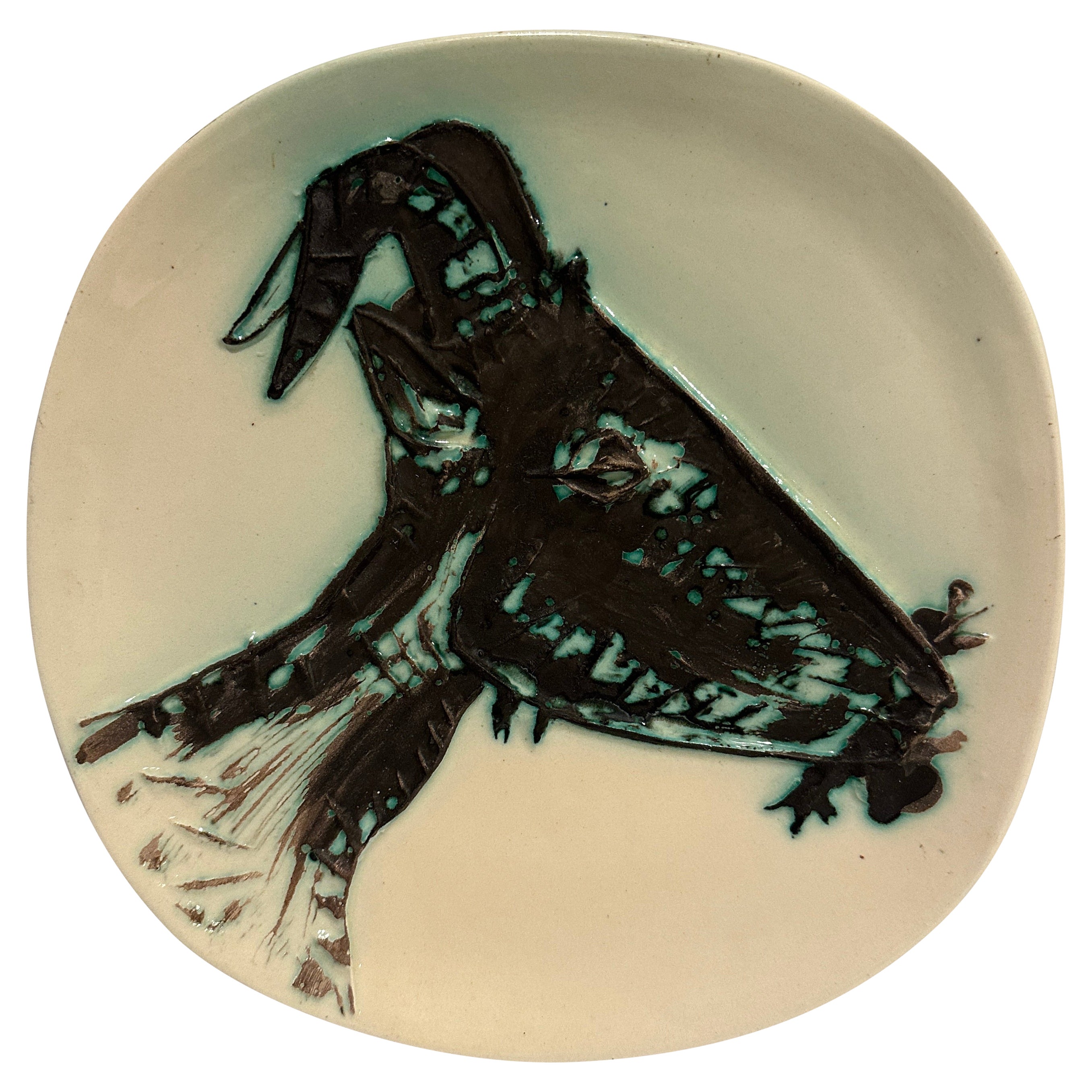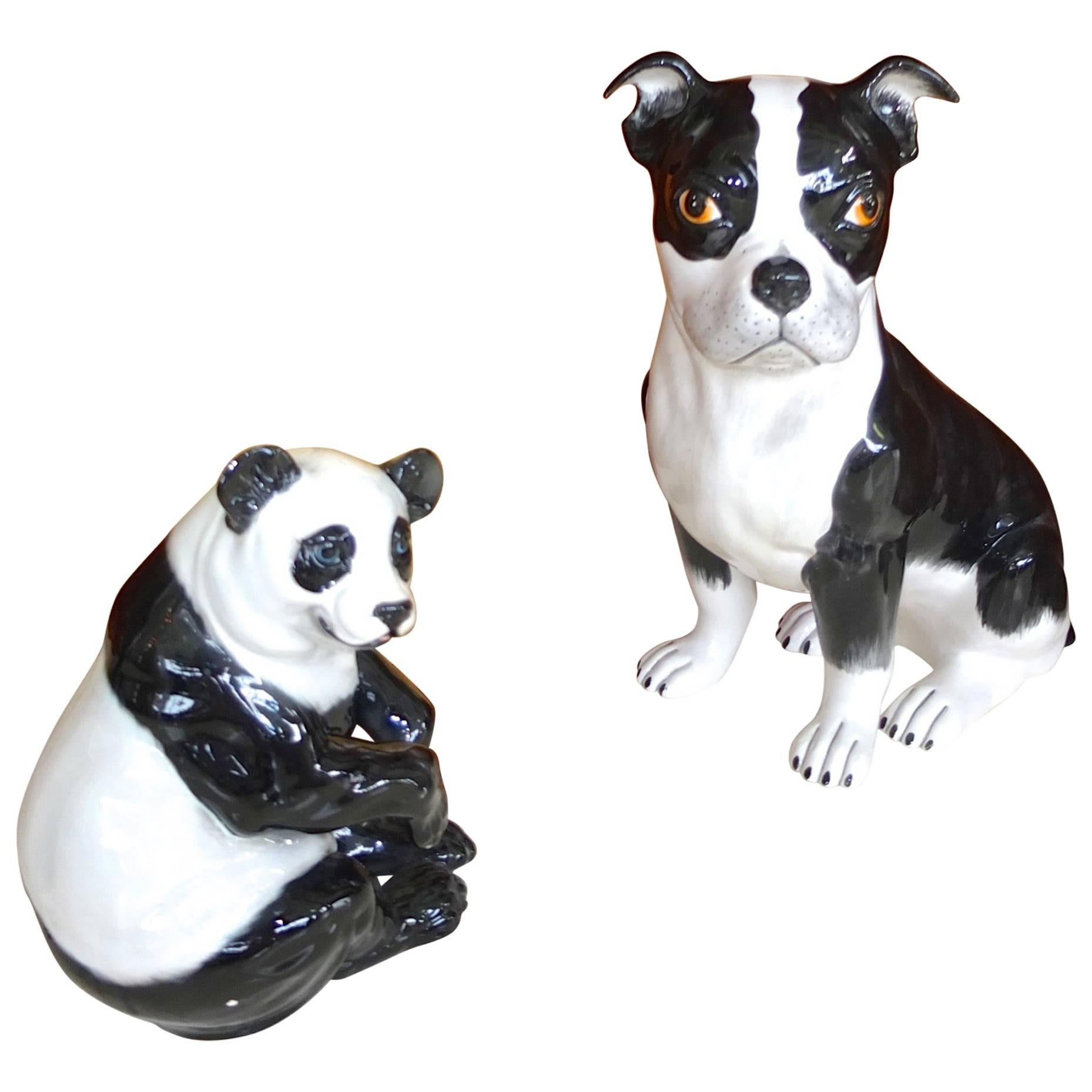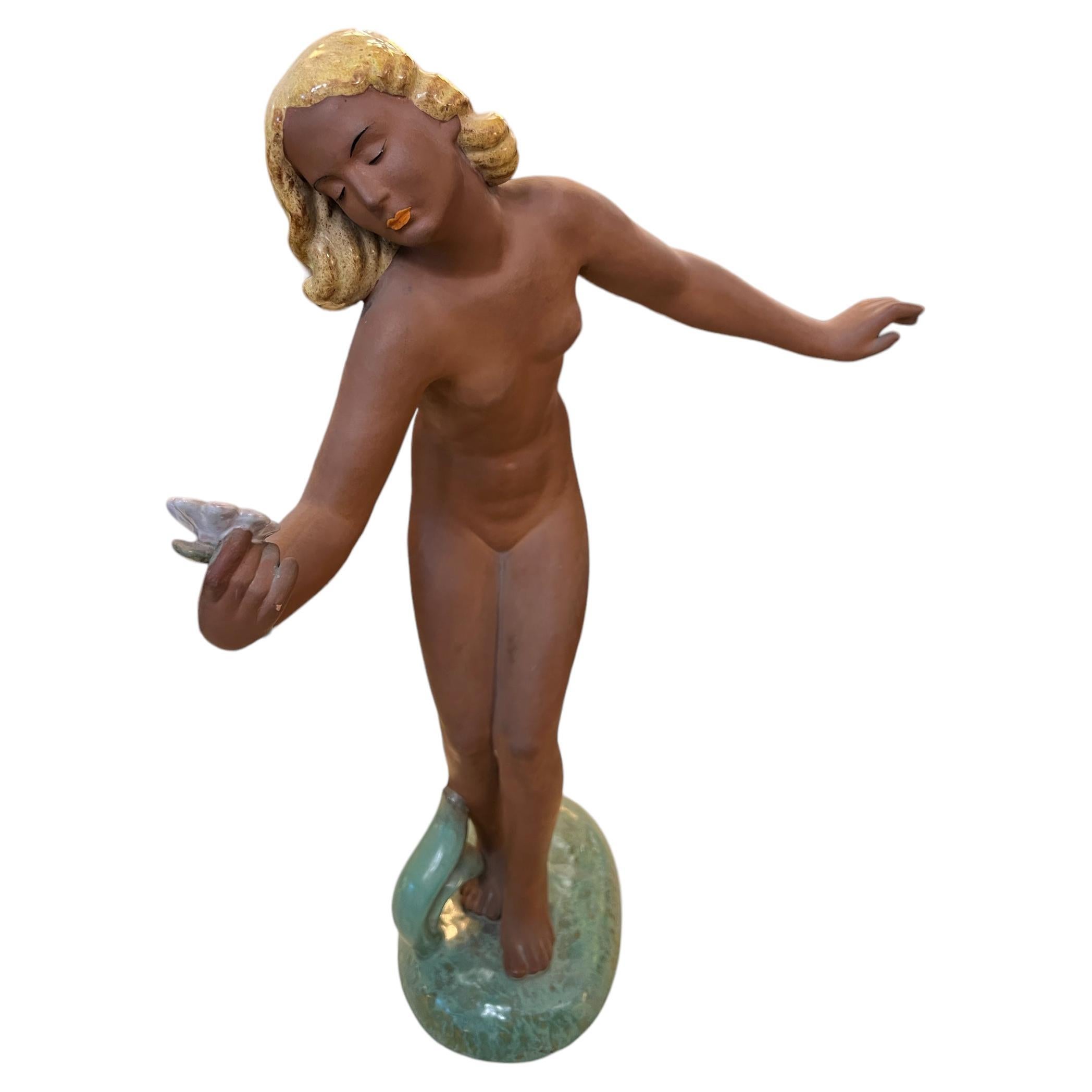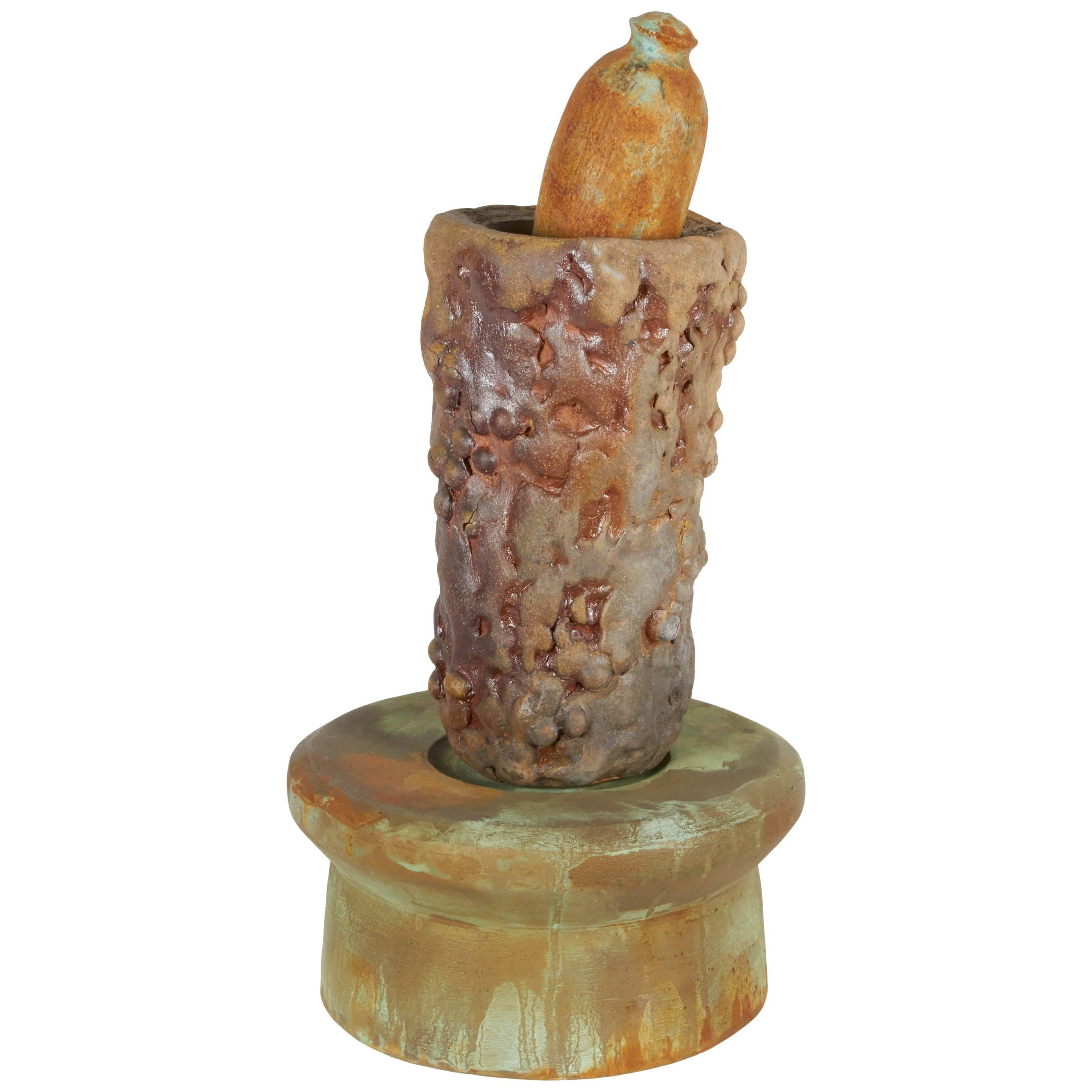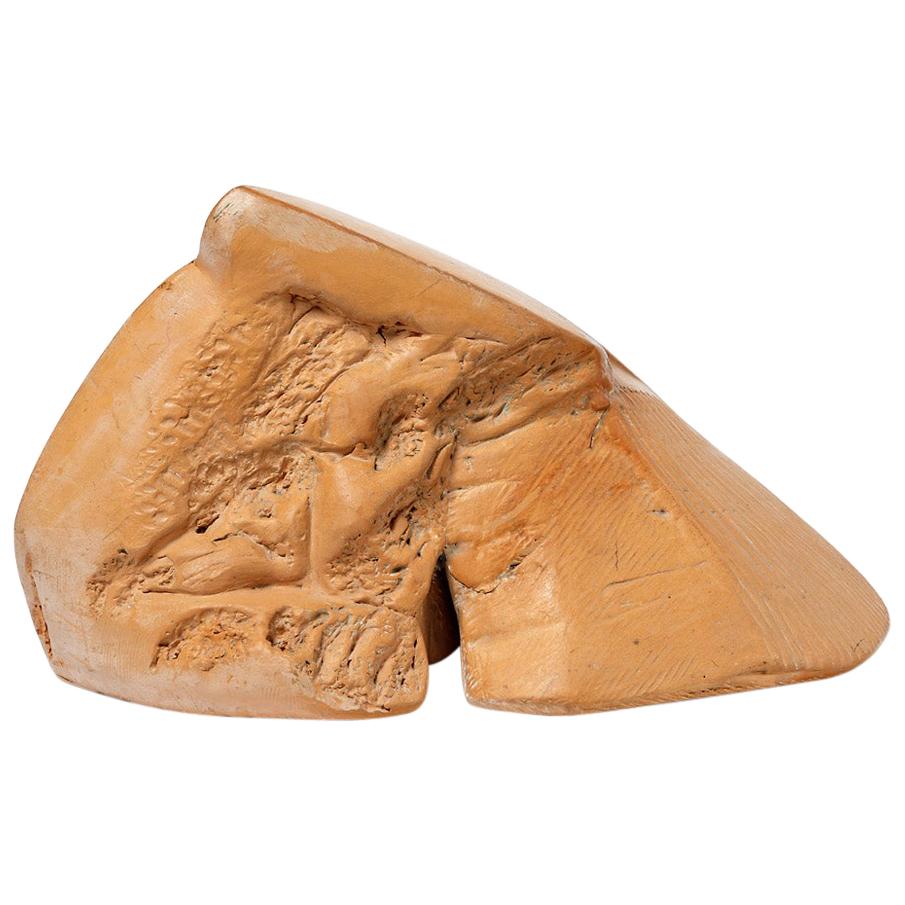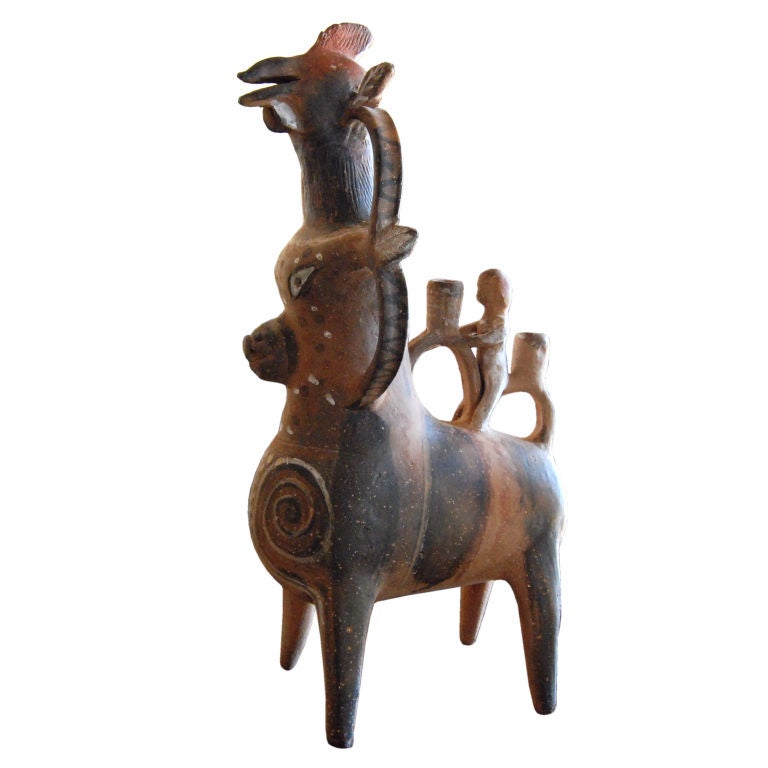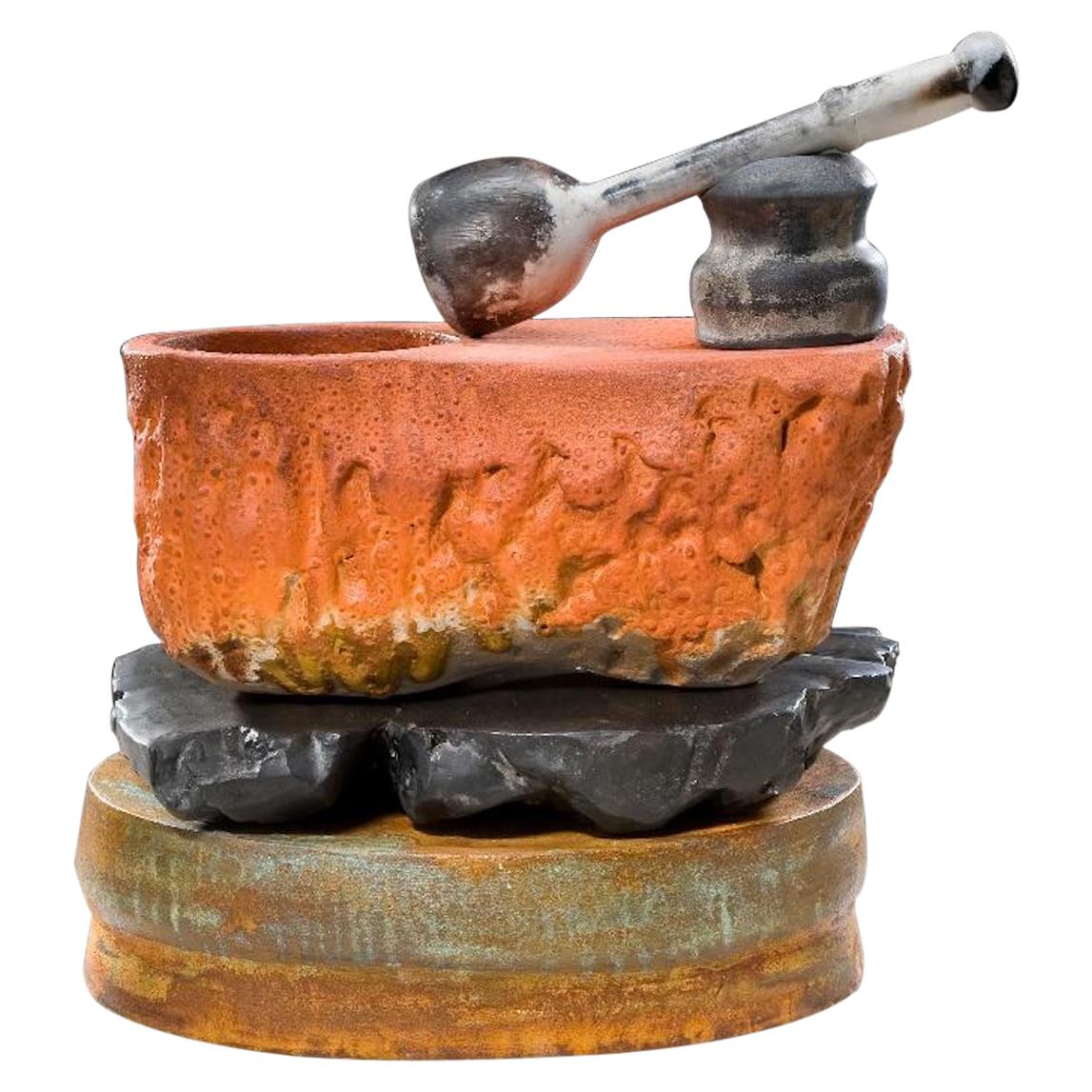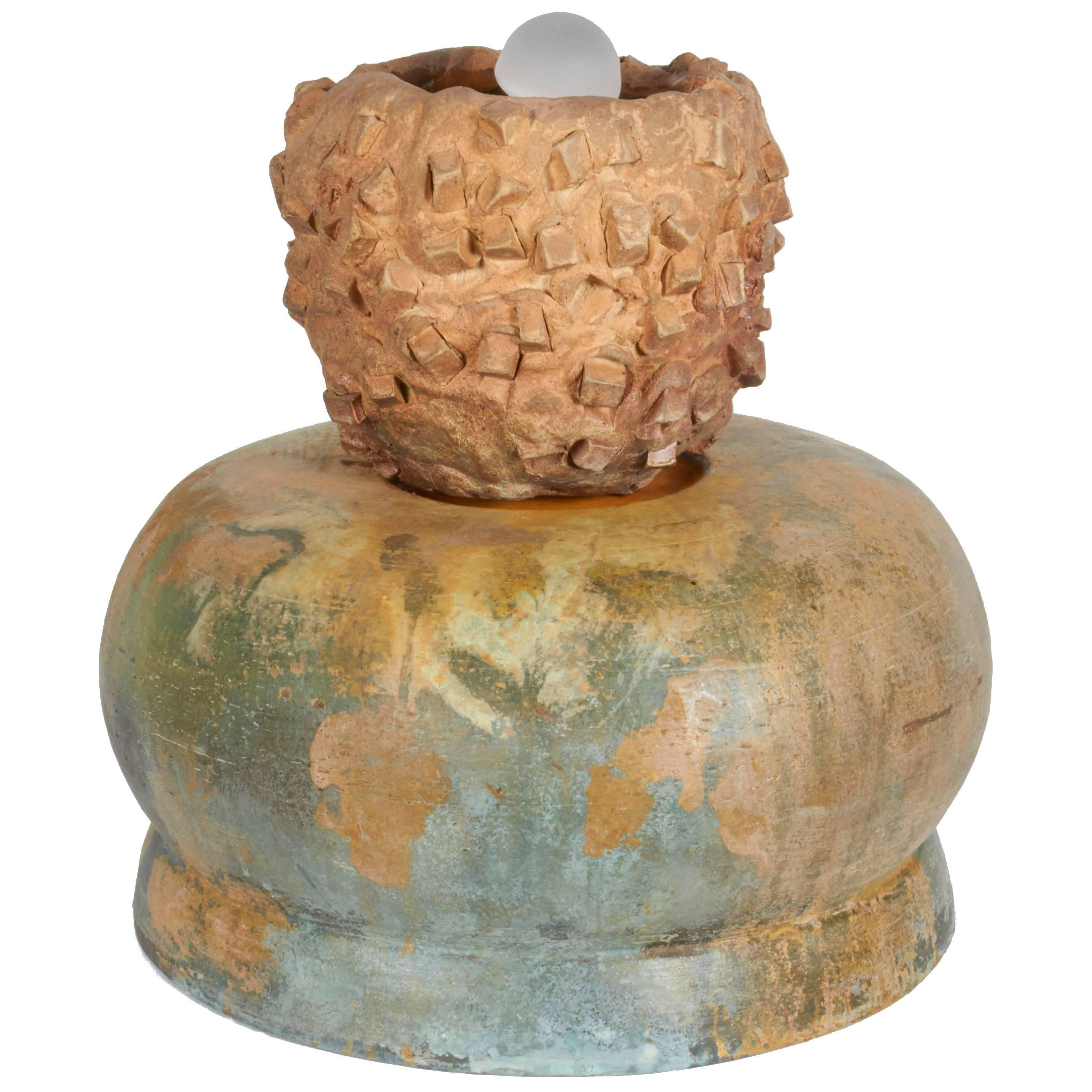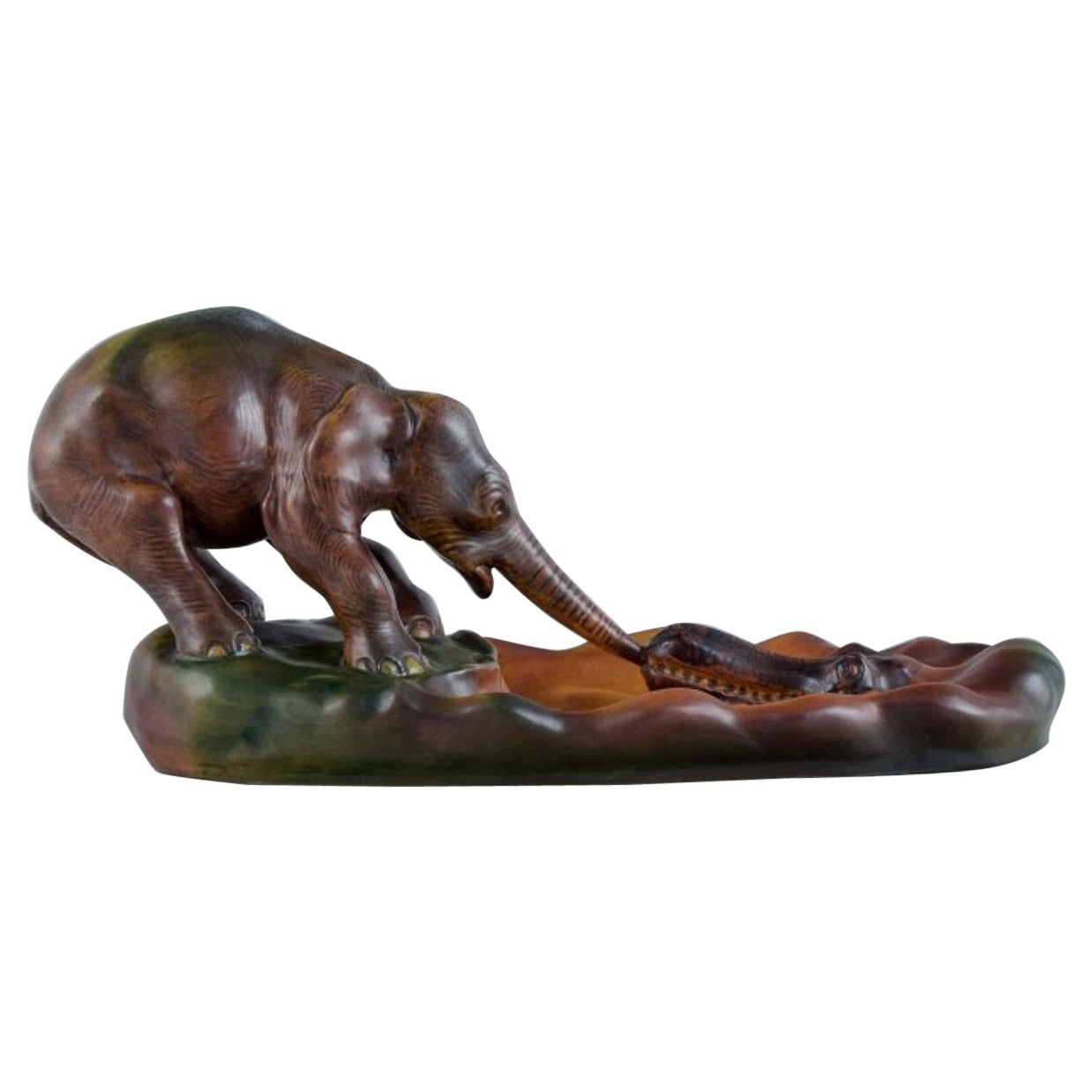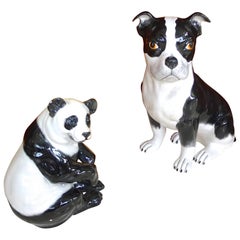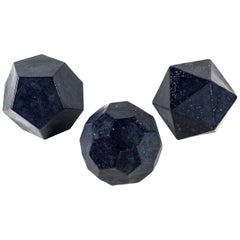
Cesare de Vita, Ceramic Triptych "Dodecahedron, Fullerene and Icosahedron"
View Similar Items
1 of 2
Cesare de Vita, Ceramic Triptych "Dodecahedron, Fullerene and Icosahedron"
About the Item
- Creator:Cesare de Vita (Artist)
- Dimensions:Height: 10.24 in (26 cm)Diameter: 11.82 in (30 cm)
- Sold As:Set of 2
- Materials and Techniques:
- Period:
- Date of Manufacture:2017
- Production Type:New & Custom(One of a Kind)
- Estimated Production Time:Available Now
- Condition:
- Seller Location:Lugano, CH
- Reference Number:1stDibs: LU242839613931
You May Also Like
- Picasso Ceramic Plate "Tête De Chèvre De Profil' Ramié 110By Pablo PicassoLocated in Norwood, NJThis Picasso ceramic plate "Tête de chèvre de profil' Ramié 110 is one in a small edition of only 60 and is glazed and painted, with the Empre...Category
Vintage 1950s French Mid-Century Modern Ceramics
MaterialsCeramic, Earthenware
- Enamel Ceramic Sculptures by Desiree De Rdidder, Argentine Contemporary ArtistLocated in Buenos Aires, Buenos AiresSet of three pieces. Green mushroom dimensions: 42 cm height, 31 cm diameter top. Red mushroom dimensions: 42 cm height, 32 cm width, 24 cm depth. White cactus dimensions: 51 cm height, 41 cm width, 41 cm depth. Desiree De Ridder, argentine contemporary artist. Studies 1991-1995 Painting Professorship, Prilidiano Pueyrredón (UNA). 1999 Animation, Central Saint Martins College of Art and Design, London, UK 2002-2004 Graciela Olio and Alejandra Jones´s Ceramic Workshop. 2018 Residency in Coatlicue Workshop, Oaxaca, Mexico. Solo exhibitions 2018 Waiting for the alarm call. Calvaresi Gallery, Buenos Aires, AR 2017 Acuchilla una piedra, Urbano Poggi Museum, Rafaela, Santa Fe, AR. 2016 Exodus, Elsi del Rio Gallery, CABA, Argentina. 2014 Desirée De Ridder. Mujica Láinez Museum, Córdoba, Argentina. 2013 Desirée De Ridder Installations, Bellas Artes Pavilion, UCA, Bs As, AR 2010 21 gramos esenciales. Installation. La Guanaca Azul Art Gallery, Bs As, AR 2009 Argentine Animals. Installation. Metropolitan Museum, Bs As, AR 2008 Patrimonio Animal Installation. Metropolitan Museum, Bs As, AR 2007 Pingüinera. Installation. Javier Baliña Gallery, Buenos Aires, Argentina. 2006 Javier Baliña Gallery, Sculptures, Buenos Aires, Argentina. 2005 Paintings. Arguibel Art, Buenos Aires, Argentina. 2001 Halle Pajol, París, France. 2000 Galerie Argentine. Embassy of Argentina, Paris, France. Cultural Center of San Salvador de Jujuy, Jujuy, Argentina. 1998 Halle Pajol. Paris, France. Awards and distinctions 2018 Receives the Municipal Found of Arts from Tigre Municipality. 2017 Is part of the Jury in the National Salon of Visual Arts – Ceramics. Argentinian National Cultural Ministry 2016 Third Prize in the National Salon of Visual Arts (Ceramics) Argentina. 2015 Andreani Foundation Award for Visual Arts. (Selection) 2014 103° National Salon of Visual Arts (Ceramics) Argentinian National Cultural Ministry (Selection) 2013 Prize for Honorable Mention, San Isidro Municipality. 2009 98° National Salon of Visual Arts (Ceramics), Argentinian National Cultural Ministry (Selection) 2006 Annual Ceramics Exhibition (Selection). Buenos Aires Center of Museums, Argentina. 2006 XXIII Exhibition of New Artists (Ceramics). Buenos Aires Stock Exchange, AR Collective exhibitions 2018 La otra mitad del arte, Philippe Cyroulnik curatorship, Borges Cultural Center 2017 FACA, Ambos Mundos, Buenos Aires, Argentina. 2016 Requiem for a story. Cecilia Caballero Gallery, CABA, AR 105° National Salon of Visual Arts (Ceramics) Palais de Glace, Buenos Aires, AR 2015 Andreani Foundation Award for Visual Arts. Borges Cultural Center, Bs As, AR Poetics of the Noble Savage. De Ridder-Orlowski. Praxis Gallery, Bs As, AR Diseño de Raíz (Design from the Root). Contemporary Argentine Designers. Sívori Museum, Bs As, AR Ivera. Provincial Museum of Fine Arts, Corrientes, Argentina. 2014 ArteBa, Zavaleta Lab. CABA, Buenos Aires, Argentina. 103° National Salon of Visual Arts (Ceramics) Palais de Glace, Bs As, AR 2013 Casa FOA, Arts and Crafts Space, Palacio Tornquist, Bs As, AR San Isidro Municipality Prize. (Honorable Mention) 2012 Grillo Art Gallery, Punta Del Este, Uruguay...Category
2010s Argentine Modern Figurative Sculptures
MaterialsCeramic
- Italian Ceramic Boston Terrier and PandaLocated in Hanover, MADelightful large-scale ceramic figures of a nearly life-size black and white glazed Boston Terrier and a Panda bear. Marked with numbers and Made in Italy. Attributed to Eugenio Patt...Category
Vintage 1960s Italian Mid-Century Modern Animal Sculptures
$750 / set - Ceramic Triptych Wall SculptureLocated in Los Angeles, CAInteresting ceramic sculpture made up of three panels. Each panel measures 3" D x 4.5" W x 17.5"H. Drip glaze ceramic. Great earth tones. Single hole on backside of each panel for ha...Category
Vintage 1970s American Ceramics
MaterialsCeramic
$1,400 / set - Ceramic Red and Black, Style, Art DecoLocated in Ciudad Autónoma Buenos Aires, CCeramic Sign: Made in Austria Keramos 2051 19/M Wiener Keramos, later Keramos AG or Keramos KG , was a Viennese ceramics manufacturer that made a name for itself especially in the interwar period . In addition to their own designs, designs from the dissolved Wiener Werkstätte were also produced from 1932 onwards. In over 60 years of company history, around 3000 model designs have been produced by around 60 ceramists. Keramos also carried out commissions from the Wiener Werkstätte, such as vases by Dagobert Peche . History The origins of the Keramos company lie in two companies with the same name. The company Keramos – Invalid Society for Viennese Art Ceramics was founded at the end of 1919 on the initiative of the three ceramists Rudolf Wolf, Heinrich Wolf and Ludwig Rys, who had become invalids in World War I. Production started in September 1920. Art-ceramic lamps, figures, vases and boxes were produced. The company Keramos – Viennese art ceramics and porcelain manufactory was founded in 1920. Josef Hoffmann was a shareholder of Keramos for a long time, as was the sculptor Rudolf Podany, who was engaged from the start and created a large number of designs. From 1921 Anton Klieber was employed, who was also responsible for most of the models. Around 1924 both companies were merged and converted into an AG, commercial director became Otto Köller, the technical directors were the brothers Rudolf and Heinrich Wolf. "Some war invalid ceramists founded a workshop with the help of some artists, which was subsequently financed by the state and later enlarged with its participation and converted into a joint-stock company." The company's headquarters were in the Hofburg , Schwarze-Adler-Stiege, the factory in the 10th district of Vienna, Schleiergasse 17. Artistic collaborators at that time were Eduard Klablena , Otto Prutscher , Karl Perl , Karin Jarl-Sakellarios , IDA Schwetz- Lehmann and Grete Fucik-Fischmeister. On February 23, 1928, the triangular mark was entered in the trademark register. It was now also produced for the Wiener Werkstätte. Difficulties for the company arose from the Great Depression . Around 1932, 50 people were employed and a large number of models from Eduard Klabena and the dissolved Wiener Werkstätte were taken over. The works created by Keramos were labeled with their company brands until after 1941. From 1939 the economic situation of the company was better managed by taking over the production of ceramic winter welfare organization badges, the so-called WHW badges. Before 1941 the company is converted into a KG named Keramos, Wiener Kunstkeramik und Porzellanmanufaktur Brüder Wolf KG . Otto Köller was no longer active from this point on. After the end of World War II, Robert Obsieger recommended Robert Mathis as the new head of Keramos, who took over the management of the ceramics manufactory in 1945. In 1949 Mathis introduced a new company logo, which was used alongside the existing triangle mark, the so-called coat of arms mark. Anton Klieber and Rudolf Podany continued to work as ceramists, and new artists such as Josef Lorenzl and Stephan Dakon , both of whom had previously worked for Goldscheider , as well as Rudolf Chocholka, Karl Grössl and Ina Eisenbeisser were engaged. New models such as dancers, children's figures, animals and nudes were created, as well as the well-known wall masks, young people and poodles from the mid-1950s, which corresponded to the trend at the time. In addition, however, traditional designs such as Madonna statues and busts, saints and angels were still made. Utility ceramics such as crockery, vases, lamp bases, candle holders and flower pots also became an important branch of production, and cooperation with the German manufacturer Carstens at the beginning of the 1960s was just as lucrative. In the course of the 1960s, the sales markets for figurative ceramics became increasingly difficult. So until 1982, production was increasingly shifted to everyday ceramics, since ceramic figures were no longer modern due to changing tastes and the spirit of the times. Ultimately, the economic situation at Keramos became more and more difficult and Klaus Mathis, the son of Robert Mathis and then director, who succeeded his father at the helm of the company at the beginning of the 1970s, initiated the liquidation of the company at the end of 1982 . Staff The following artistic collaborators have worked for Keramos over the years: Hans Adametz , Franz Barwig the Elder , Franz Barwig the Younger , Andreas Beck, Hans Bolek, Angelo Bortolotti, Hertha Bucher , Rudolf Chocholka, Stephan Dakon , Ferdinand Doblinger, Eckstein, Franz Eggenberger , Ina Eisenbeisser, English, Stephan Erdös, Alois Feichtinger, Feyslitz, Hans Friedberger, Grete Fucik-Fischmeister, Kurt Goebel, Anton Grath, Karl Grössl, M. Günther, Otto Hafenrichter, Arnold Hartig , Friedrich Herkner, Trude Hillinger, Leopold Hohl, Hostasch, Karl Jamök, Karin Jarl-Sakellarios , Eduard Klablena, Klar, Anton Klieber, Maria Klinger, Josef Kostial, Josef Lorenzl , Wilhelm Otto Lugerth, Viktor Matula, Gusty Mundt-Amman, Novotny, Carl Perl, Rudolf Podany, Friedrich Pollak, Hugo Postl, Adolf Prischl, Otto Prutscher , Max Rieder , Elisabeth Rieger-Hofmann, Walter Ritter , Willibald Russ, Karl Sailer, Schönberg, Schwarz, Ida Schwetz-Lehmann , Sult, Robert Ullmann , Otto Weigand, IDA Weiss-Moricz, Rudolf Wolf. Exhibitions • Jubilee exhibition of the Wiener Kunstgewerbeverein, Austrian Museum , Vienna 1924. • Arts and Crafts Exhibition, Paris, 1925. • Exhibition of Austrian arts and crafts...Category
Vintage 1930s Austrian Art Deco Figurative Sculptures
MaterialsCeramic
- Richard Hirsch Ceramic Mortar and Pestle, 2007By Richard A. HirschLocated in New York, NYContemporary American ceramic artist Richard Hirsch's Mortar and Glass Pestle #27 is raku-fired, hand built and hand sculptured. This piece is made of three separate pieces of green ...Category
21st Century and Contemporary American Modern Abstract Sculptures
MaterialsCeramic
$10,500 / set
